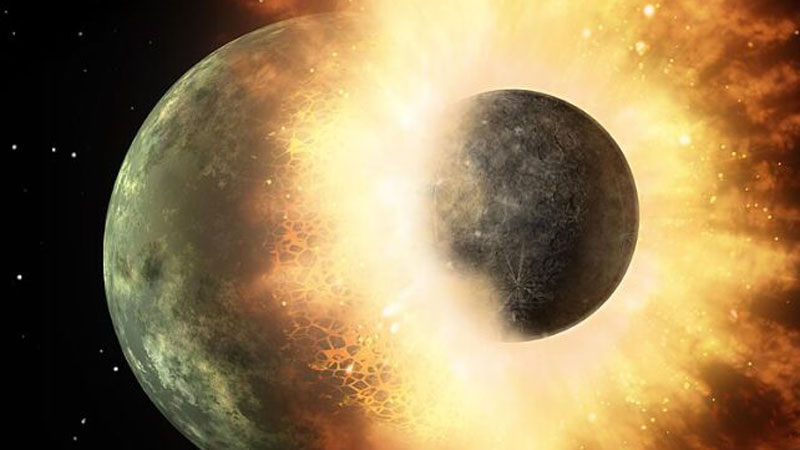The moon turned out to be more ancient than expected – scientists have given a new estimate of the age of the satellite


Lunar samples delivered to Earth provide conflicting data on the age of the satellite. Most minerals indicate that the Moon is 4.35 billion years old. At the same time, analysis of lunar zircon crystals indicates an older age of the Moon – up to 4.51 billion years. An international team of scientists has conducted simulations that explain this discrepancy and also help solve other mysteries of the satellite.


Image source: NASA
The leading hypothesis is that about 4.6 billion years ago, the young Earth collided with a planet the size of Mars. As a result of the collision, a significant amount of the mass of our planet was thrown into space, from which a natural satellite was subsequently formed. Initially, the Moon was a global ocean of magma, which, however, froze relatively quickly. This allowed zircon to persist in the depths of the cooled Moon, gradually surviving the decay of uranium to lead.
Radioisotope analysis of zircon brought back from the Moon showed that the age of samples from two different samples is 4.46 and 4.51 billion years. However, analysis of minerals and igneous rocks from the same samples gave an age of 4.35 billion years. Scientists in their new work explained this discrepancy: it could arise if the surface of the Moon – its crust – melted again some time after solidification. This secondary melting could have been caused by the Earth’s tidal action, which heated the Moon’s interior to the melting point. Modeling shows that this is possible given a certain and highly elongated satellite orbit. Similar processes, by the way, are occurring today in the depths of Jupiter’s satellite, Io.
Evolution of the Moon’s interior. Image source: Francis Nimmo et al. / Nature, 2024
Secondary melting of the Moon’s surface could also have obscured evidence of many impact craters. Scientists continue to be surprised by the relatively small number of craters on the Moon, and this phenomenon may be explained by the fact that they have simply healed over. The new estimate of the moon’s age, based on the presented model, places restrictions on the time of its formation, placing it between 4.43 and 4.53 billion years ago. The moon turns out to be older than it looks.
Recent Posts
Unique supercomputer Anton 3 for molecular dynamics tasks put into operation
The Pittsburgh Supercomputer Center (PSC) has launched the Anton 3 computing complex, a specialized next-generation…
Unique supercomputer Anton 3 for molecular dynamics tasks put into operation
The Pittsburgh Supercomputer Center (PSC) has launched the Anton 3 computing complex, a specialized next-generation…
‘The Journey Is More Important Than the Destination’: Skyblivion Lead Reacts to The Elder Scrolls IV: Oblivion Remastered Leak
In addition to the official remake of the cult fantasy role-playing game The Elder Scrolls…
‘The Journey Is More Important Than the Destination’: Skyblivion Lead Reacts to The Elder Scrolls IV: Oblivion Remastered Leak
In addition to the official remake of the cult fantasy role-playing game The Elder Scrolls…
Planescape: Torment Could Have Got a Sequel — Former Dragon Age and Fallout: New Vegas Writers Were Working on It
The famous fantasy role-playing game Planescape: Torment from the developers of Black Isle Studios has…
Planescape: Torment Could Have Got a Sequel — Former Dragon Age and Fallout: New Vegas Writers Were Working on It
The famous fantasy role-playing game Planescape: Torment from the developers of Black Isle Studios has…